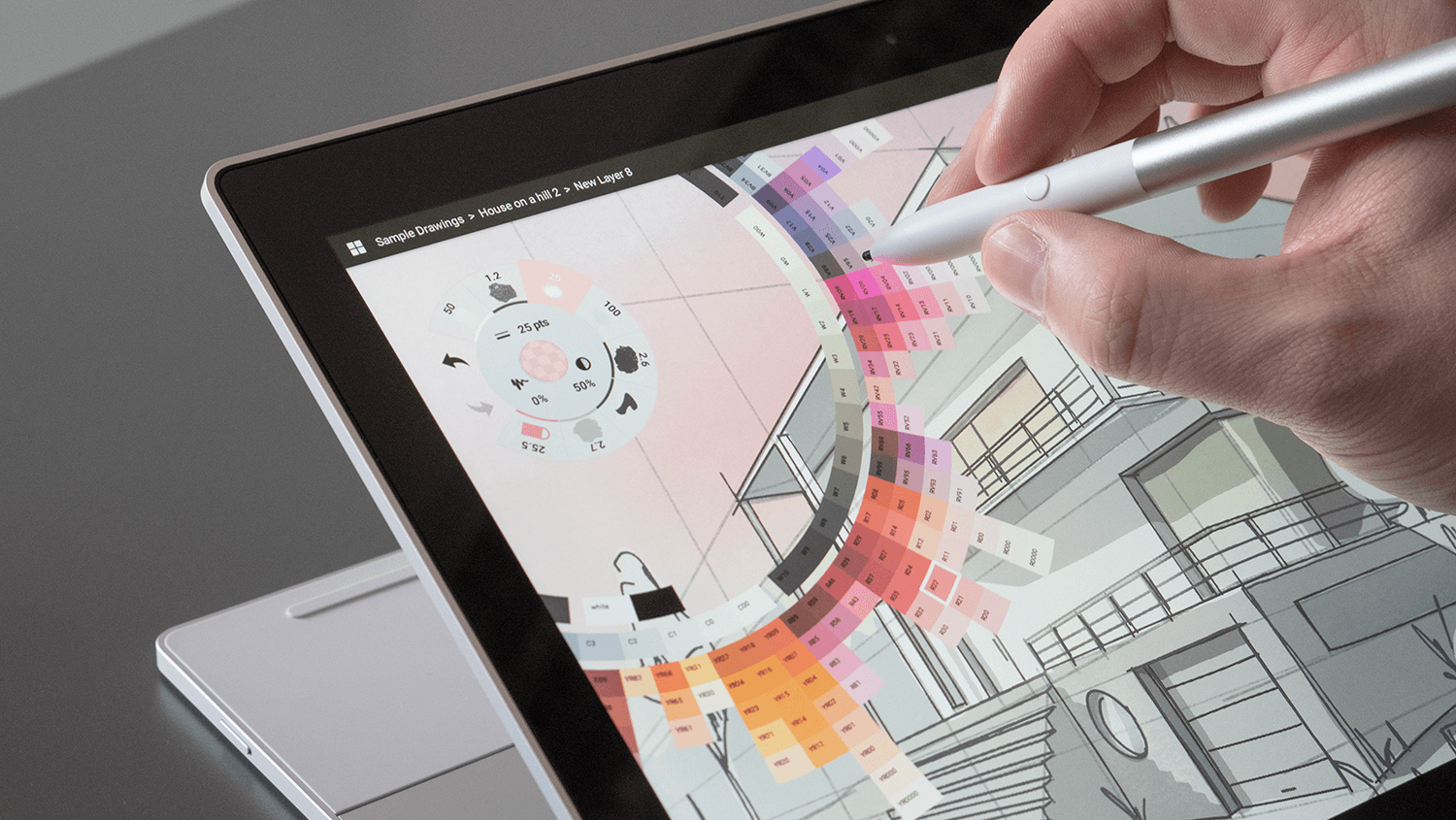![]()
TopHatch の少数精鋭チームが開発したコンセプトは、従来のスケッチブックが持つ柔軟性とデジタル描画ツールのスピードや汎用性を組み合わせた、先進的なデザイン プラットフォームです。最初から、モバイルで画面をタッチして感覚的に操作できるようなインターフェースに設計されているので、プロのデザイナーはさまざまな環境のもと、美しくかつ高感度なツールを使って、ベクターを調整しながら作業できます。コンセプトは、さまざまな創作にぴったりのツールだと言えます。TopHatch のデベロッパーは、コンセプトが備える高感度かつ高精度なタッチペンと大きなキャンバスが、アイデアを形にしていくうえで大いに役立つことを認識していました。また、Pixelbook Pen、折りたたみ式スマートフォンといった多目的デバイスが登場する中、大画面やさまざまなフォーム ファクタ向けにコンセプトの UX を構築すれば、より多くのクリエイターにアピールする機会もつかめます。TopHatch のデベロッパーは、Google からのヒントとベスト プラクティスを活用して、ChromeOS デバイスと Android デバイスで没入感のあるエクスペリエンスを実現する Concepts アプリの作成に取り組みました。

TopHatch の取り組み
高性能グラフィックス
チームの最優先事項は、ChromeOS が Concepts の先進的なデザインと、あらゆるデバイスでシームレスなパフォーマンスをサポートできるようにすることでした。コンセプトは高度に最適化された低レベルの GPU コードで動作します。Android デバイスは種類が多いため、どのドライバでも高速なパフォーマンスを確保できるのかどうかを TopHatch は懸念していました。Google のエンジニアと ChromeOS の機能を評価した結果、TopHatch は OS のグラフィックに一貫性があり、デバイス間で互換性があることがわかりました。つまり、すべての GPU ドライバで最大のパフォーマンスを発揮するアプリの構築は、予想よりも簡単だとわかったのです。チームは最終的に 5 パターンのレンダリング エンジンを開発しました。これらのエンジンにより、Android 7 と OpenGL ES 3.1 という最低要件を満たせば、約 2,500 種類のデバイスでコンセプトが滑らかに動作するようになります。ChromeOS 向けの Concepts を構築した後、TopHatch はさらに一歩進んで折りたたみ式デバイス向けにアプリを調整しました。ChromeOS はすでに動的な画面サイズ変更に完全に対応しているため、チームはわずか半日で最適化を完了できました。
低遅延のタッチペンとキーボードをサポート
コンセプトを快適に使用するには、スムーズで高速のタッチペン操作が何より重要です。デジタル デザイナーはタッチペンに本物のインクペンのような感触を求めています。したがって、TopHatch の次の目標は、タッチ入力を検知してから画面に線を描画するまでの時間をできるだけ短くすることでした。
Android と Chrome OS の間にある複数のソフトウェア レイヤでは、遅延が起きたり、画面上に描画される線に途切れやズレなどの悪影響が生じたりする可能性が大いにあります。TopHatch のチームはこの問題を認識し、フロント バッファ レンダリングに解決策を見出しました。フロント バッファ レンダリングは Chrome OS のセキュリティとシンプルさにより実現する技術で、これにより描画プロセスでソフトウェア レイヤをバイパスすることができ、ピクセルのコピー回数が最小限になります。この方法で、タッチペン入力検知から描画までの時間が大幅に短縮されるので、本物のペンと紙で絵を描く感覚に限りなく近づけることができます。また、TopHatch はコンセプトのプロジェクト操作メニューとツールバーの画面をキーボードで直感的に操作できるようなサポートも追加しました。これにより、デザイナーはアプリでアクティブに描画していないときに、プロジェクトの管理、名前変更、表示、共有を簡単に行うことができます。
結果
初期の ChromeOS 版 Concepts に対するデザイナーからの反応は素晴らしいものでした。コンセプトの平均利用時間は、他のデバイスと比較して Chromebook では 12 倍、Google Pixelbook と Pixel Slate では 20 倍となっています。また、Chromebook のユーザーが有料ユーザーになる割合は、他のデバイスと比較して Pixelbook では 2 倍、Slate では 4 倍となっています。TopHatch の共同創設者で CEO の David Brittain 氏は、「ChromeOS 向けのアプリを構築することで、関心の高いユーザー層、そして巨大な Android 市場にリーチすることができました」と話します。大画面ユーザーは増えており、大画面向けの設計でそうしたユーザーを一気に取り込めるようになることはわかっていました。結果として、すでに信じられないほどの反応を受け取っています。」TopHatch は毎月のアップデートでユーザーをサポートするよう取り組んでいます。最近ではリクエストの多かった画像インポート機能をリリースし、デザイナーは手持ちの写真にスケッチや書き込みを行えるようになりました。今後も ChromeOS と Android のクリエイターと協力し、あらゆるタイプのデザイナーがパワフルでクリエイティブなライフスタイルを送れることを楽しみにしています。
使ってみる
ChromeOS に合わせてアプリを最適化する方法をご確認ください。

